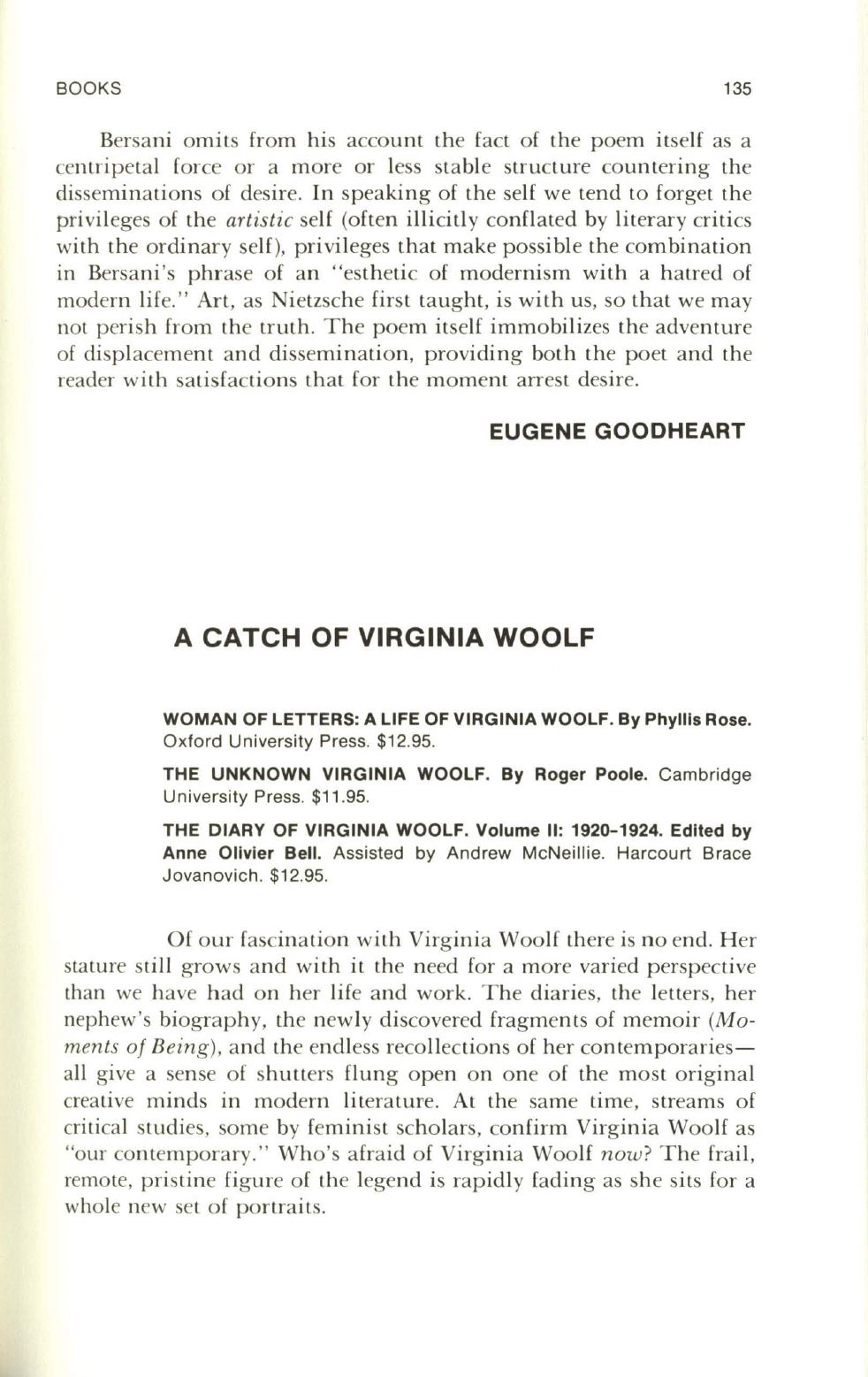
BOOKS
135
Bersani omits from his account the fact of the poem itself as a
centripetal force or a more or less stable structure countering the
disseminations of desire.
In
speaking of the self we tend to forget the
privileges of the
artistic
self (often ill icitly conflated by literary critics
with the ordinary self), privileges that make possible the combination
in Bersani's phrase of an "esthetic of modernism with a hatred of
modern life." Art, as Nietzsche first taught, is with us, so that we may
not perish from the truth. The poem itself immobilizes the adventure
of displacement and dissemination, providing both the poet and the
reader with satisfactions that for the moment arrest desire.
EUGENE GOODHEART
A CATCH OF VIRGINIA WOOLF
WOMAN OF LETTERS: A LIFE OF VIRGINIA WOOLF. By Phyllis Rose.
Oxford University Press. $12.95.
THE UNKNOWN VIRGINIA WOOLF. By Roger Poole.
Cambridge
University Press. $11 .95.
THE DIARY OF VIRGINIA WOOLF. Volume II: 1920-1924. Edited by
Anne Olivier Bell.
Assisted by Andrew McNeilli e. Harcou rt Brace
Jovanovich. $1 2.95.
Of our fascination with Virginia Woolf there is no end. Her
stature still grows and with it the need for a more varied perspective
than we have had on her life and work. The diaries, the letters, her
nephew's biography, the new ly discovered fragments of memoir
(Mo–
ments of Being),
and the endless reco llections of her contemporaries–
all give a sense of shutters flung open on one of the most original
creative minds in modern literature. At the same time, streams of
critical studies, some by feminist scholars, confirm Virginia Woolf as
"our contemporary." Who's afraid of Virginia Woolf
now?
The frai l,
remote, pristine figure of the legend is rapidly fading as she sits for a
whole new set of portraits.


